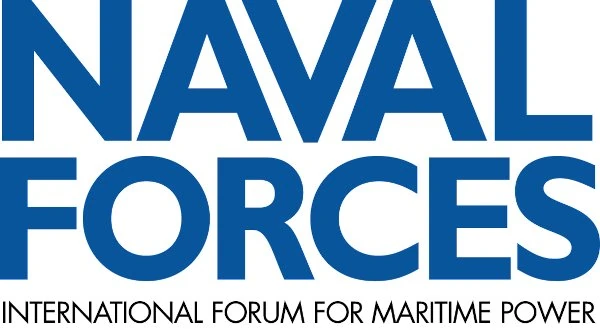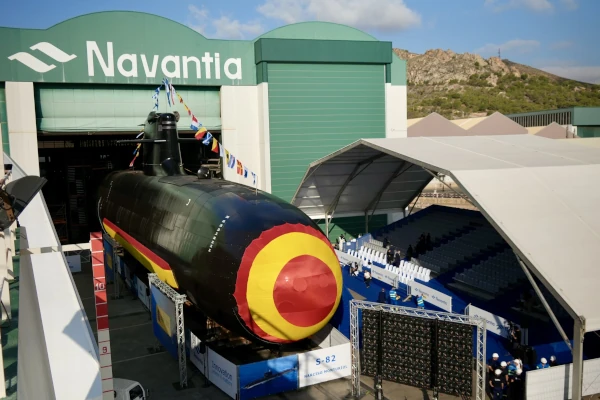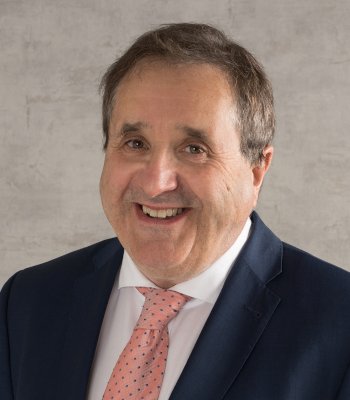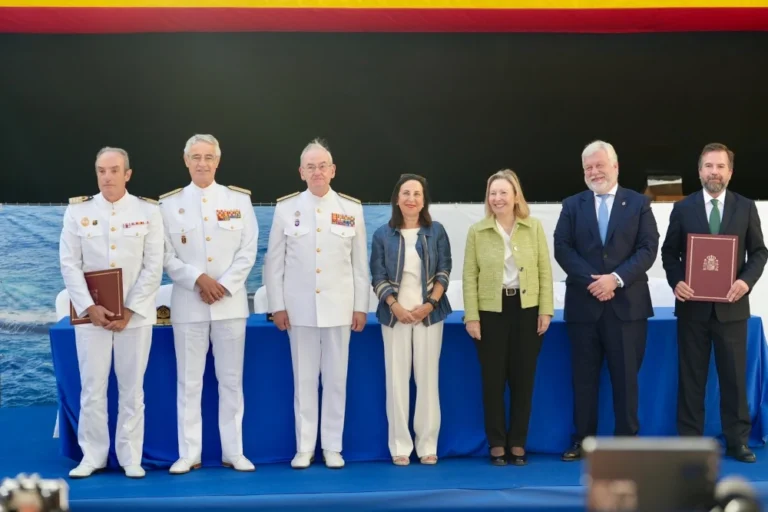Navantia’s shipyard in Cartagena (Murcia) has hosted (on 3 October) the naming ceremony of the S-80 submarine SPS Narciso Monturiol (S 82). This is the second submarine in the S-80 series being built for the Spanish Navy (Armada). In addition to this milestone, Navantia is also working on the remaining two submarines that make up the Isaac Peral class, which are the SPS Cosme García (S 83) and the SPS Mateo García de los Reyes (S-84), with delivery dates expected in 2028 and 2029, respectively.
The modernisation of Spain’s Submarines Flotilla achieved a major milestone with the commissioning of SPS Isaac Peral (S 81) on 30 November 2023, the first of four Isaac Peral class (S-80) long-range conventional attack submarines.
Spain’s Strategic Defence Review (released in February 2003) considered the S-80 attack submarine programme a priority effort. This document emphasised the need to procure new-generation submarines to retain the nation’s submarine capacity with two submarines operating simultaneously in two theatres. Within this scheme, the S-80 Plus was designed to undertake a variety of roles, among them anti-surface warfare (ASuW), anti-submarine warfare (ASW), special operations, selective land attack, intelligence, surveillance and reconnaissance (ISR), as well as minelaying.
The naming ceremony of the second S-80 submarine was presided by the Minister of Defence, Margarita Robles, while the submarine’s sponsor has been Mrs. Isabel López, spouse of the Chief of Defence, Admiral Teodoro López Calderón. The ceremony took place next to Navantia’s facility where the final outfitting of the submarine was completed. This is the step before the submarine is placed in the water using a floating dock, a manoeuvre that takes several hours and will be carried out in the coming weeks as part of the shipyard’s operations. The S-82 will be then ready to begin harbour trials and, subsequently, sea trials, which include surface navigation and submersion to maximum depth, thus confirming the progress of the S-80 programme, a fundamental project for Spanish defence and for its industrial and technological sovereignty.
The S-80 programme has meant a technological leap for Spain’s premier naval shipbuilder Navantia and its cooperating industries, placing them at the forefront of the world’s conventional submarine market. Around one hundred companies are taking part in the programme, including SAES, Indra, Sener, Abengoa, Grupo Oesia, Gabadi and Fluidmecanica. With the aim to speed up and improve the construction of the submarines and reduce production costs, the shipyard has gradually installed robotised production systems at its plant in Cartagena. Babcock, Lockheed Martin, General Dynamics Electric Boat, Rolls-Royce Power Systems, Northrop Grumman Sperry Marine, Avio, EUROATLAS, AEROMARITIME, Sulzer, Boeing, Atlas Elektronik, Air Liquide, Exide Technologies, Saab and L3Harris Technologies are among the foreign contractors contributing to the submarine programme.
At the naming ceremony of SPS Narciso Monturiol, Navantia’s COO, Gonzalo Mateo-Guerrero, stated that “the S-80 programme is a direct contribution to defence, sovereignty and the international projection of our industry. We are honoured to continue building capabilities that strengthen the security of Spain and our allies. It has industrial, strategic, commercial and defence significance. Industrially, it drives the modernisation of processes and technologies. Strategically, it provides a technological advantage, reinforcing national security and sovereignty. Commercially, it opens export opportunities. And in terms of defence, it contributes to the protection of national interests,” concluded Mateo-Guerrero.
The Chief of Naval Staff emphasised that “the submarine is the ultimate deterrent: discreet and lethal. Its mere presence contributes to sea control and denies the opponent freedom of manoeuvre. The Submarine Force is a capability the navy has maintained for over a hundred years, and is now exponentially enhanced with the S-80 submarines.”
The submarine’s sponsor and wife of the Chief of Defence Staff, Isabel López, expressed her gratitude and emotion, as well as her joy at taking part in a ceremony that marks a historic milestone for Cartagena.
The second S-80 submarine is named after Narciso Monturiol Estarriol, a Spanish engineer, intellectual, politician, painter and inventor, born in Figueres (Girona) in 1819. He is recognised, along with Cosme García Sáez and Isaac Peral, as one of the pioneers of global submarine navigation. The results of his work are collected in his posthumous work ‘Essay on the Art of Navigating Underwater,’ published in 1891. He was the inventor of the ‘Ictíneo,’ a submarine launched in Barcelona in 1859. In September of that year, he conducted a public demonstration in which the submarine remained submerged for more than two hours at 20 metres, and successfully returned to the surface.
The S-80 submarines measures 80.81 metres in length and 7.3 metres in diameter for a maximum beam of 11.68 metres and a draught 6.3 metres; they can reach a maximum surface speed of 10 knots and a maximum submerged speed of 19 knots. Their surface displacement is quoted at 2,696 tonnes, while the submerged displacement is 2,965 tonnes. The submarines will be able to accommodate 32 crew members and eight special forces personnel. Among their technological contributions is the so-called Integrated Combat System Core (ICSC), a combat and platform control system developed by Navantia’s Systems business unit and incorporating elements of Lockheed Martin’s International Diesel-Electric Submarine Integrated Combat System (SUBICS). Navantia also is responsible to install other equipment, including the Integrated Platform Management System (IPMS) with inertial navigation system (INS) and automatic identification system (AIS), as well as a fully integrated communications suite incorporating LF, VLF, HF, VHF, UHF, SATCOM and GPS systems, as well as the Tecnobit LINPRO multi datalink processor.
Indra was tasked to deliver a wide range of mission systems for the submarines, including: Aries-S low-probability of intercept (LPI) high-resolution surface surveillance and navigation radar system; Mode 5 identification friend or foe (IFF) transponder; TSUB X- and Ku-band SATCOM terminal; and Pegaso electronic warfare suite combining radar electronic support measurement (RESM) and communications electronic support measures (CESM) with electronic intelligence (ELINT) and communications intelligence (COMINT) functionalities.
The anaerobic propulsion system developed for the S-80 submarines is described to be “revolutionary”; called BEST-AIP, it provides great stealth while submerged. This atmosphere-independent propulsion system allows the generation of electrical energy from fuel cells using technology derived from the aerospace sector, at any depth. They can remain submerged for weeks without surfacing to periscope depth, greatly enhancing their discretion, the main attribute of a submarine, placing the S-80 among the most advanced conventional (non-nuclear) submarines in the world. The AIP module will be installed first in the submarine SPS Cosme García and later in all three submarines.
The Isaac Peral class is fitted out with six 533mm torpedo tubes capable to launch the ATLAS ELEKTRONIK SeaHake mod 4 long-range heavyweight torpedo and the Boeing UGM-84 Sub-Harpoon Block II anti-ship and land attack missile. An acoustic countermeasures launcher system supplied by Babcock provides the submarines with anti-torpedo defence capability.



